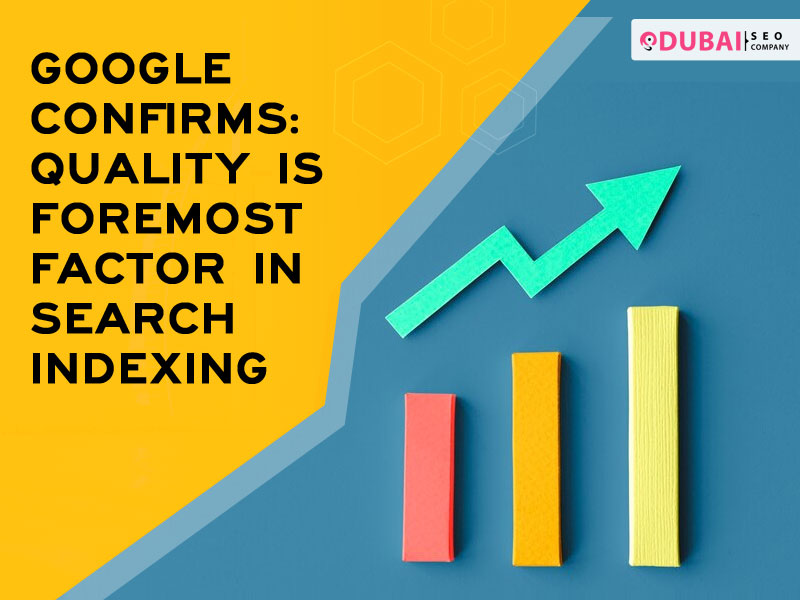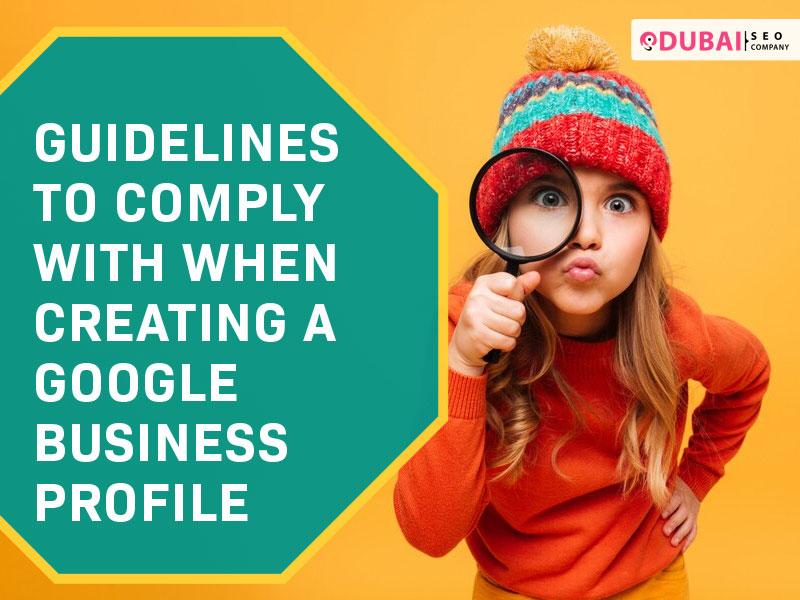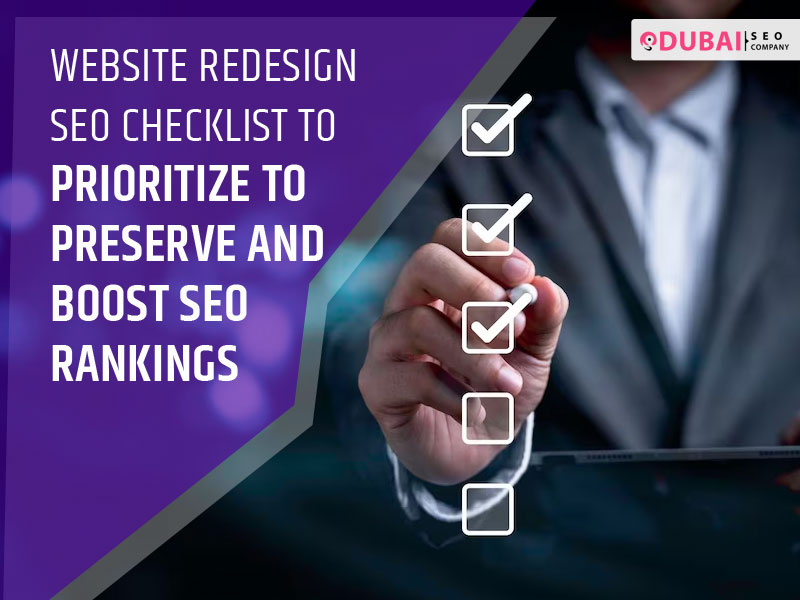-
How Does Google PageSpeed Insights Work?
How Does Google PageSpeed Insights Work?
Table of Contents
- How Does Google PageSpeed Insights Work?
- Metrics for Google Page Speed Testing – Insights and Rankings
- How Does Google PageSpeed Work?
- Breakdown of Google PageSpeed Insight Test Report
- Google Page Speed Test Yielded a Score of 100/100
- Dubai SEO Company’s Record
Google PageSpeed Insights is a tool provided by Google that analyzes the performance of web pages on both mobile and desktop devices. Understanding how this tool works and its implications for website optimization is crucial for businesses looking to enhance user experience and improve search engine rankings. This article explores the functionality of Google PageSpeed Insights, the metrics it measures, and how partnering with the best SEO company can leverage these insights for maximum impact.
How Does Google PageSpeed Insights Work?
Google PageSpeed Insights evaluates the performance of a web page using a set of metrics and provides suggestions to improve its speed and usability. The tool analyzes both lab data (simulated performance metrics) and field data (real-world user data) to offer a comprehensive assessment.
Metrics for Google Page Speed Testing – Insights and Rankings
Google PageSpeed Insights measures several key metrics to evaluate the performance of a web page:
-
First Contentful Paint (FCP): This metric measures how long it takes for the first piece of content to appear on the screen. A fast FCP indicates quicker perceived load times.
-
Time to Interactive (TTI): TTI measures the time it takes for a web page to become fully interactive. A shorter TTI enhances user engagement and satisfaction.
-
First Input Delay (FID): FID measures the responsiveness of a web page by evaluating the time it takes for a user to interact with the page (e.g., clicking a button) and receiving a response.
-
Cumulative Layout Shift (CLS): CLS quantifies how much the content of a web page shifts during loading. A low CLS score indicates a stable and predictable layout, providing a better user experience.
How Does Google PageSpeed Work?
Google PageSpeed Insights works by analyzing the content of a web page and running performance tests to generate insights and recommendations for improvement. Here’s how the process generally unfolds:
-
Input URL: Enter the URL of the web page you want to analyze into Google PageSpeed Insights.
-
Performance Analysis: The tool fetches the page from the server and evaluates its performance based on predefined metrics.
-
Lab Data vs. Field Data: Google PageSpeed Insights provides both lab data (simulated performance metrics) and field data (real-world user data) to give a comprehensive view of the page's performance.
-
Score and Suggestions: It generates a score (ranging from 0 to 100) for both mobile and desktop versions of the page. The score reflects how well the page performs based on the metrics analyzed. Additionally, it offers suggestions to optimize various aspects of the page for improved performance.
Breakdown of Google PageSpeed Insight Test Report
The Google PageSpeed Insights test report provides a detailed breakdown of the performance metrics and recommendations for improvement:
-
Performance Score: Indicates the overall performance score for the web page, highlighting areas of strength and areas that need improvement.
-
Opportunities: Suggests specific optimizations that can significantly improve the page's performance. These may include minimizing render-blocking resources, optimizing images, leveraging browser caching, and reducing server response times.
-
Diagnostics: Identifies potential issues that may affect the page's performance, such as unused CSS or JavaScript, inefficient coding practices, or large file sizes.
-
Passed Audits: Lists audits that the page successfully passed, indicating areas where performance meets or exceeds expectations.
Google Page Speed Test Yielded a Score of 100/100
Achieving a perfect score of 100/100 on Google PageSpeed Insights is considered exceptional and indicates that the web page is optimized for maximum performance. This achievement reflects efficient coding practices, optimized resources, fast load times, and excellent user experience.
Dubai SEO Company’s Record
Partnering with the best SEO company in Dubai can help businesses achieve outstanding results on Google PageSpeed Insights and beyond. Here’s how a leading SEO company can leverage these insights:
Expert Analysis
Experienced SEO professionals conduct in-depth analyses of Google PageSpeed Insights reports to identify performance bottlenecks and opportunities for improvement.
Optimization Strategies
Utilizing recommendations from Google PageSpeed Insights, SEO experts implement proven strategies to optimize web pages for speed, responsiveness, and overall performance.
Continuous Monitoring
SEO companies monitor performance metrics over time to ensure that web pages maintain optimal speed and user experience. They adapt strategies based on evolving best practices and algorithm updates.
Impact on SEO
Improved page speed and performance positively impact SEO rankings by enhancing user experience, reducing bounce rates, and increasing engagement metrics.
Customized Solutions
Tailored SEO solutions address specific needs and goals, ensuring that optimizations align with business objectives and contribute to long-term success.
In conclusion, understanding how Google PageSpeed Insights works and partnering with the best SEO company in Dubai are essential for optimizing web page performance, enhancing user experience, and improving SEO rankings. By leveraging insights and implementing strategic optimizations, businesses can achieve exceptional results in online visibility and user engagement. Continuous monitoring and adaptation ensure sustained performance improvements and competitive advantage in digital landscapes.
-
Google Confirms: Quality Is Foremost Factor in Search Indexing
Google Confirms: Quality Is Foremost Factor in Search Indexing
Table of Contents
- Quality Influences Google’s Crawling and Indexing Decisions
- Search Indexing Procedure of Google
- Google’s Emphasis on Quality Content
- Hiring a Team of Expert Digital Marketers is a Prudent Decision
In the realm of online visibility and search engine optimization (SEO), Google holds a prominent position as the leading authority. Understanding how Google evaluates and indexes content is crucial for businesses aiming to enhance their online presence. According to leading SEO company in Dubai, Google's latest updates underscore the importance of quality in content and user experience. This article delves into Google's criteria for search indexing, its emphasis on quality content, and why collaborating with expert digital marketers can elevate your SEO strategy.

Quality Influences Google’s Crawling and Indexing Decisions
Google's search algorithm is designed to assess and rank web pages based on various factors, with quality being paramount. When Google crawls a website, it evaluates the relevance, usefulness, and trustworthiness of its content. Websites that consistently provide high-quality, authoritative content are more likely to rank higher in search results.
Relevance
Content must be relevant to the search queries users input. This involves using appropriate keywords and providing information that directly addresses the user's intent.
Useful Information
Google prioritizes websites that offer valuable and comprehensive information. This includes answering common questions, providing insights, and solving problems for users.
Trustworthiness
Websites must be trustworthy sources of information. Factors like domain authority, backlinks from reputable sites, and accurate information contribute to establishing trust with both users and search engines.
Search Indexing Procedure of Google
Google's search indexing process involves several steps to ensure that web pages are accurately categorized and ranked in search results:
-
Crawling: Googlebot, Google's web crawling bot, systematically browses the web and discovers new and updated pages.
-
Indexing: After crawling, Google indexes web pages based on their content, relevance, and quality. Indexed pages are stored in Google's massive database, the index.
-
Ranking: When a user performs a search query, Google's algorithm determines the most relevant pages from the index and ranks them based on numerous factors, including quality signals.
Google’s Emphasis on Quality Content
Quality content is pivotal in Google's approach to providing users with the best possible search experience. Google has explicitly stated that high-quality content is crucial for achieving high rankings. Here’s why quality content matters:
-
User Satisfaction: High-quality content meets the needs and expectations of users, resulting in longer dwell times and lower bounce rates.
-
Authority: Quality content establishes your website as an authoritative source within your industry or niche, attracting links from other reputable sites.
-
E-A-T (Expertise, Authoritativeness, Trustworthiness): Google assesses content based on E-A-T principles to ensure it comes from credible sources.
Hiring a Team of Expert Digital Marketers is a Prudent Decision
Navigating the complexities of SEO and maintaining high-quality standards requires expertise and strategic thinking. Here’s how leading SEO company in Dubai can contribute to your digital success:
Strategic SEO Planning
Expert digital marketers understand Google's algorithm updates and industry trends. They develop tailored SEO strategies that align with your business goals and drive sustainable growth.
Quality Content Creation
Digital marketers create compelling content that resonates with your target audience. They conduct keyword research, optimize content for SEO, and adhere to best practices for readability and engagement.
Technical SEO Optimization
From website audits to performance optimization, digital marketers ensure your site meets technical SEO standards. This includes improving site speed, mobile responsiveness, and implementing structured data.
Link Building and Outreach
Building quality backlinks is crucial for SEO success. Digital marketers employ ethical link-building strategies to enhance your site's authority and visibility in search results.
Performance Monitoring and Reporting
Continuous monitoring and analysis of SEO performance help digital marketers refine strategies and capitalize on opportunities. They provide transparent reporting and actionable insights to track progress.
Compliance with Google Guidelines
Digital marketers stay updated with Google's guidelines and ensure your SEO efforts comply with best practices. This minimizes the risk of penalties and maintains your site's credibility.
In conclusion, Google’s affirmation of quality as the foremost factor in search indexing underscores the importance of prioritizing content excellence and user satisfaction. Collaborating with a leading SEO company in Dubai allows businesses to leverage expertise, drive organic traffic, and achieve sustainable growth in competitive digital landscapes. By focusing on quality content, strategic SEO planning, and continuous optimization, businesses can enhance their online visibility and maintain competitive advantage in search engine rankings.
-
Guidelines to Comply with When Creating a Google Business Profile
Guidelines to Comply with When Creating a Google Business Profile
Table of Contents
- Google Business Profile: What is It?
- Guidelines for Creating a Business Profile on Google
- Here’s what a business must do so as to prevent Google from suspending it.
- Rules and Regulations for Local Businesses
Google Business Profile, formerly known as Google My Business, is a powerful tool for businesses to manage their online presence across Google, including Search and Maps. Creating and maintaining a Google Business Profile is essential for local businesses looking to attract customers in their area and improve visibility in local search results.

Google Business Profile: What is It?
Google Business Profile is a free tool provided by Google that allows businesses to create and manage their online presence. It includes important business information such as:
- Business name, address, and phone number (NAP)
- Business hours
- Website URL
- Services or products offered
- Customer reviews and ratings
- Photos and videos of the business
Having a complete and accurate Google Business Profile helps potential customers find your business when they search for relevant keywords or phrases related to your products or services.
Guidelines for Creating a Business Profile on Google
When creating a Google Business Profile, follow these guidelines to ensure compliance and maximize the effectiveness of your listing:
Here’s what a business must do so as to prevent Google from suspending it.
-
Claim Your Profile: Claim ownership of your business on Google to manage and update your information.
-
Provide Accurate Information: Ensure that your business name, address, and phone number (NAP) are accurate and consistent with your website and other online listings.
-
Choose the Right Category: Select the most relevant category that describes your business accurately.
-
Verify Your Business: Google may require verification to confirm that you are the rightful owner or manager of the business.
-
Use High-Quality Images: Upload photos that showcase your business, including the exterior, interior, products/services offered, and team members.
-
Encourage Customer Reviews: Regularly ask satisfied customers to leave positive reviews on your Google Business Profile. Respond to reviews, both positive and negative, to show that you value customer feedback.
Rules and Regulations for Local Businesses
Google has specific rules and regulations that local businesses must follow to maintain their Google Business Profile and prevent suspension:
-
Quality Guidelines: Adhere to Google’s quality guidelines for representing your business on Google. This includes not using misleading information, manipulating reviews, or using prohibited content.
-
Prohibited Content: Avoid including prohibited content such as fake reviews, offensive material, illegal activities, or misleading information about your business.
-
Multiple Listings: If your business has multiple locations, create separate listings for each location. Each listing should have unique information and a verified address.
-
Ownership and Access: Ensure that only authorized individuals have access to manage your Google Business Profile. Grant access carefully and remove access for former employees or agencies if necessary.
-
Updates and Changes: Keep your business information up to date, including changes in business hours, contact information, or services offered. Regularly review and update your profile as needed.
-
Compliance with Local Laws: Follow local laws and regulations regarding business operations, advertising, and customer interactions. This includes complying with data privacy laws and regulations.
By following these guidelines, businesses can create a strong and compliant Google Business Profile that enhances their online visibility and attracts potential customers. It's essential to monitor your profile regularly, respond to customer reviews, and update information to maintain a positive online reputation and improve local SEO rankings.
In conclusion, leveraging Google Business Profile effectively can significantly benefit your business by increasing online visibility, attracting local customers, and enhancing your overall digital presence. By adhering to Google’s guidelines and best practices, businesses can optimize their profiles for maximum impact and ensure compliance with Google’s policies. Regularly updating and monitoring your profile will help maintain accuracy and relevance, ultimately contributing to the success and growth of your business in the digital age.
-
Website Redesign SEO Checklist to Prioritize to Preserve and Boost SEO Rankings
Website Redesign SEO Checklist to Prioritize to Preserve and Boost SEO Rankings
Table of Contents
- Website Redesign Process
- SEO Checklist to Give Priority to When Redesigning Your Site
- Perform Website Analysis
- Ensure the Older Version of Your Site Remains Live
- Save Old Site’s Crawling Information
- Old URLs Redirection
- Refrain from Changing Anything in URL Structures
- Audit and Modify Web Content
- Conclusion
Website redesign is an important step for any business looking to update its online presence and improve user experience. However, during this process, it's crucial to prioritize SEO to preserve and boost your existing search engine rankings. Working with an SEO company like SEO company Dubai can help ensure that your redesign not only enhances aesthetics but also maintains or improves your SEO performance.

Website Redesign Process
A website redesign involves updating the look, feel, and functionality of your website. This process can include changing the design layout, updating content, improving navigation, and integrating new features. While redesigning your site, it's essential to consider how these changes will impact your SEO efforts.
SEO Checklist to Give Priority to When Redesigning Your Site
Perform Website Analysis
Before making any changes, conduct a thorough analysis of your current website and its SEO performance. Identify high-performing pages, keyword rankings, backlink profiles, and areas for improvement. This analysis will serve as a baseline to measure the impact of the redesign on your SEO.
Ensure the Older Version of Your Site Remains Live
Keep the older version of your site live until the new design is fully implemented and tested. This ensures uninterrupted access for users and search engines to your content. It also serves as a fallback option if any issues arise during the redesign process.
Save Old Site’s Crawling Information
Preserve the crawling information of your old site, including XML sitemaps and robots.txt files. This data helps search engines understand your site’s structure and content, facilitating smoother indexing and crawling of the redesigned site.
Old URLs Redirection
Redirect old URLs to corresponding new URLs using 301 redirects. This tells search engines that the content has permanently moved to a new location. Failure to redirect old URLs can result in broken links, loss of traffic, and decreased rankings.
Refrain from Changing Anything in URL Structures
Maintain the existing URL structure as much as possible. Changing URLs unnecessarily can confuse search engines and cause them to treat the new pages as completely different from the old ones. If URL changes are unavoidable, implement proper redirects and update internal links accordingly.
Audit and Modify Web Content
Review and update your web content during the redesign process. Ensure that all content is relevant, optimized for target keywords, and aligned with your SEO strategy. Improve readability, incorporate relevant keywords naturally, and enhance multimedia elements like images and videos.
Conclusion
In conclusion, a website redesign offers an opportunity to enhance user experience and modernize your online presence. However, it’s crucial to prioritize SEO to preserve and boost your existing search engine rankings. By following the SEO checklist outlined above and collaborating with an experienced SEO company Dubai, you can minimize the risks associated with redesigning your site and ensure a smooth transition. Remember, SEO is an ongoing process, and continuous monitoring and optimization are key to maintaining and improving your site’s visibility and performance in search engine results.

You’re offline. This is a read only version of the page.

